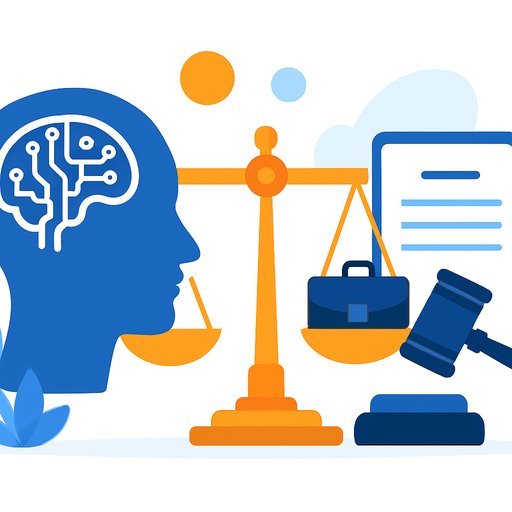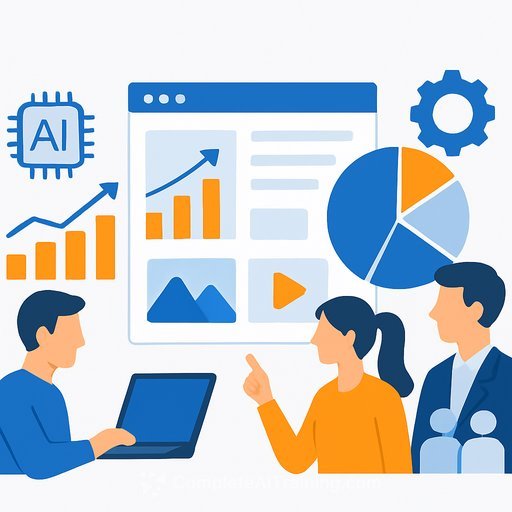Human Oversight: The Missing Link in AI-Driven Marketing
AI is now baked into modern marketing. It segments audiences, drafts copy, and personalises journeys in minutes. Useful? Absolutely. But marketing is still a human-to-human discipline. Creativity, judgement, and empathy decide the difference between relevant and tone-deaf.
Speed without scrutiny is risky. If no one owns the ethics, the output owns your reputation.
Speed is good. Blind speed isn't
AI doesn't feel cultural nuance or see the impact of a poorly framed message. We've already seen biased outputs, like stereotypical images of professionals or skewed targeting. Once trust fractures, it's expensive and slow to rebuild.
That's why human oversight isn't overhead-it's insurance for brand equity.
Set the balance: automation where safe, human where it matters
CIM course director and iCompli trainer Duncan Smith argues the balance between automation and oversight should flex with risk, customer impact, and brand values. Treat AI risk like GDPR risk: when stakes are high-legal, reputational, or ethical-humans must be in the loop.
- Define risk tiers for AI use: low (spellchecks), medium (subject lines), high (pricing, eligibility, sensitive segments).
- Gate high-risk decisions behind human review and clear approval paths.
- Log decisions. If it touches real people in meaningful ways, make it auditable.
Fix bias at the source
Biased training data creates biased outcomes. It's on the brand to correct that before it hits the market.
- Curate representative data sets and document exclusions and assumptions.
- Run regular audits: demographic coverage, language sensitivity, image diversity.
- Keep humans in the loop for sensitive creative and segmentation tasks.
Responsible by default: consent, clarity, and limits
Ethics can't be an afterthought. Be transparent about how data is collected and used, capture informed consent, and set hard boundaries around what decisions AI is allowed to make.
- Use plain-language consent and make opt-outs simple.
- Publish what's automated versus what requires a human decision.
- Don't over-automate. People can tell when your brand sounds like a bot.
For baseline rules and expectations, review EU data protection guidance on lawful processing and individual rights: EU data protection rules.
Governance that earns confidence
Good governance removes guesswork. Set up structures for monitoring and regular ethical audits. Recent changes referenced in the Data (Use and Access) Act-such as automated decision rules, cookie consent updates, and formal complaints procedures-create both opportunities and responsibilities. Treat them as prompts to refresh your playbooks, not excuses to push more decisions to machines.
Creativity still decides the work
CIM course director Paul Hitchens puts it simply: AI can speed up drafts, not vision. Treat AI outputs with the same rigor you'd apply to any creative: they must feel authentic, resonate emotionally, and fit your brand's purpose. If it reads generic, it probably is.
Draw the line: where AI helps-and where it doesn't
Caroline Cook, CIM course director and founder of Brand Leadership Group, recommends a clear split. AI can surface patterns; people weigh nuance. Delegate everyday, low-risk tasks if your team can deploy them ethically and legally. For higher-stakes work, lean on human insight. Link data back to psychology, behaviour, and real-life context.
Practical checklist for marketing teams
- Write an AI use policy: approved tools, data boundaries, review steps, and escalation paths.
- Map risk tiers and require human sign-off for high-impact decisions and sensitive creative.
- Standards for content QA: tone, inclusivity, factual accuracy, and brand fit.
- Bias testing: sample outputs across demographics; review imagery and language for stereotypes.
- Human-in-the-loop for segmentation, offer eligibility, pricing, and complaint handling.
- Model and prompt logs for accountability; time-stamp key decisions.
- Incident response plan: how you roll back, notify, and fix if AI causes harm.
- Ongoing training so teams know both the capability and the limits of their tools.
Looking ahead
AI is a collection of algorithms that achieve specific outcomes. Without strong oversight, those outcomes can be off-brand and harmful. The future belongs to teams who ask better questions, apply human judgement, and build systems that keep people in control.
AI is only as effective as the humans guiding it. Oversight isn't a luxury-it's the job.
Level up your team's AI practice
If you want structured upskilling for marketers, you can explore focused paths here: AI certification for marketing specialists and AI courses by job role.
Your membership also unlocks:






